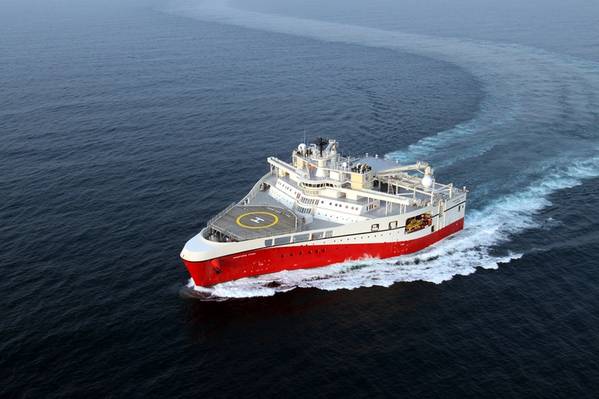
Amid mixed reports on the health of the offshore supply chain, the underreported seismic services segment — a bellwether of eventual market growth or decline — is showing signs that another wave of market recovery is just a year away.
Oslo-based analysts and their reports single out companies like Seabird Exploration, PGS and Polarcus as worthy of investment because their survey work is being ordered or looked-at anew by offshore energy companies flush with new acreage. Some, like Equinor and Aker BP, have squirreled away cash in the long wait for rig and other rates to drop.
“Typically, we see the seismic space is first to respond to an upswing owing to their library and multi-client offering that responds quickly to changes in oil-company base spending,” says Danske Bank offshore analyst, Joergen Langli.
He confirms the new front-end engineering and design work, or FEED, being awarded of late is “an early indication of value coming back to the market”, but adds that new orders on larger, greenfield projects that’ll be sanctioned in 2019 won’t help build contract backlogs until 2021. The resulting engineering work looks like it will also lag by a year the seismic being ordered now or examined for 2019 and 2020 drilling campaigns.
Though arguably hardest hit by the downturn of 2014, seismic outfits might now be recovering the fastest. Their stacked survey vessels at quayside, however, will likely not be hired for at least another year, or not until oil companies begin maturing remote acreage.
Arctic licenses recently awarded in Norway might not see seismic for at least a year, as oil companies work-up acreage in core North Sea areas. A record amount of “recycled” acreage in mature areas — some 82 licenses — were only just awarded companies in Norway, as Oslo set sights on production sooner rather than later.
“I would say that arctic exploration is hot when oil companies can afford the exploration scope that that region will require,” says Langli. He confirms oil companies have for the past couple of years busied themselves by sizing up acreage close to export infrastructure.
Focus on profit
It isn’t just the North Sea rim that’s bolstering interest in seismic, and several survey outfits report strengthening global revenue forecasts for 2019 after a strong finish to 2018. PGS, for one, noted record high “late” sales of MultiClient (or group sales) to oil companies at year-end, just as it reported increasing cash flow and better market fundamentals.
Years of wild growth across the segment are now seen yielding to a focus on profit. One Norwegian newspaper quoted an analyst saying “a turning point” had been reached in seismic, as a range of data had turned in the segment’s favor.
While PGS is doing better, it’ll be some time before stacked survey vessels across the segment join the remote-areas exploration fray. “As late as 2016, the global seismic space included far too many vessels,” Langli admits.
“The size of the seismic fleet is returning to a point where rates are starting to pick slowly up. What we have seen is that they have reduced their vessel capacity with vessels still at quayside, they’ve laid-off and they’ve trimmed their organizations,” he says.
The global supply of vessels has roughly halved since 2015. Upwards of 40 percent of the workforce has been cut, Langli says, and companies have slimmed down from “several management layers to one for two”. Vessels, too, have been sold-off at a discount.
Danske Bank Markets, which has oil heading for 70 dollars in its scenario, sees industry-wide cash flow increasing further by year-end.
Better times
“After that, the greenfield and arctic pick-up, and that’s when the fun starts,” Langlis says. “The bottom line for the whole supply chain is we need to see more demand. We have looked at the different supply side on rigs, seismic and subsea, and we see that across all sectors, supply is just so high relative to 2014. You need to tighten the supply slack across the whole value-chain before you can see price traction across the segments,” he says.
Danske Bank Markets, meanwhile, sees E&P spending slowly increasing in 2019 over 2018 toward an overall nine percent for 2019 versus 2018.
“For some sub-segments, pre-2014 demand needs to be brought back” before the supply of seismic and other subsea services increases, he adds.
PGS, meanwhile, reported in January that its contract rates are up 35 percent over the 2018 average. It is also seeing a UK market “coming back to life with positive signs of capital investment returning” after a recent round of regulatory moves.